Numerical Simulation of Three-Dimensional Dendrite Movement Based on the CA–LBM Method
Abstract
:1. Introduction
2. Materials and Methods
2.1. LBM Model
2.2. CA Model
2.3. Boundary Treatment
3. Verification
3.1. Settlement of Small, Spherical 3D Particles in Infinite Length Pipeline
3.2. Verification of the Translation of a Single Dendrite
4. Results and Discussions
4.1. Comparison of Simulation Results for 3D and 2D Models under Moving Conditions
4.2. Study of the Movement Behavior of Multiple Dendrites
5. Conclusions
Author Contributions
Funding
Institutional Review Board Statement
Informed Consent Statement
Data Availability Statement
Conflicts of Interest
References
- Appolaire, B.; Albert, V.; Combeau, H.; Lesoult, G. Free growth of equiaxed crystals settling in undercooled NH4Cl–H2O melts. Acta Mater. 1998, 46, 5851–5862. [Google Scholar] [CrossRef]
- Do-Quang, M.; Amberg, G. Simulation of free dendritic crystal growth in a gravity environment. J. Comput. Phys. 2008, 227, 1772–1789. [Google Scholar] [CrossRef]
- Badillo, A.; Ceynar, D.; Beckermann, C. Growth of equiaxed dendritic crystals settling in an undercooled melt, Part 2: Internal solid fraction. J. Cryst. Growth. 2007, 309, 216–224. [Google Scholar] [CrossRef]
- Wu, M.; Ludwig, A. Modeling equiaxed solidification with melt convection and grain sedimentation—I: Model description. Acta Mater. 2009, 57, 5621–5631. [Google Scholar] [CrossRef]
- Karagadde, S.; Bhattacharya, A.; Tomar, G.; Dutta, P. A coupled VOF-IBM-enthalpy approach for modeling motion and growth of equiaxed dendrites in a solidifying melt. J. Comput. Phys. 2012, 231, 3987–4000. [Google Scholar] [CrossRef]
- Medvedev, D.; Varnik, F.; Steinbach, I. Simulating Mobile Dendrites in a Flow. Procedia Comput. Sci. 2013, 18, 2512–2520. [Google Scholar] [CrossRef]
- Kharicha, A.; Stefan-Kharicha, M.; Ludwig, A.; Wu, M. Simultaneous observation of melt flow and motion of equiaxed crystals during solidification using a dual phase Particle Image Velocimetry technique. Metall. Mater. Trans. A 2012, 44, 650–660. [Google Scholar] [CrossRef]
- Rojas, R.; Takaki, T.; Ohno, M. A phase-field-lattice Boltzmann method for modeling motion and growth of a dendrite for binary alloy solidification in the presence of melt convection. J. Comput. Phys. 2015, 298, 29–40. [Google Scholar] [CrossRef]
- Takaki, T.; Rojas, R.; Ohno, M.; Shimokawabe, T. GPU phase-field lattice Boltzmann simulations of growth and motion of a binary alloy dendrite. IOP Conf. Ser. Mater. Sci. Eng. 2015, 84, 012066. [Google Scholar] [CrossRef] [Green Version]
- Ludwig, A.; Vakhrushev, A.; Wu, M.; Holzmann, T.; Kharicha, A. Simulation of Crystal Sedimentation and Viscoplastic Behavior of Sedimented Equiaxed Mushy Zones. Trans. Indian Inst. Met. 2015, 68, 1087–1094. [Google Scholar] [CrossRef]
- Xin, B.; Yun, C.; Xiu, H.; Dian, Z.; Tong, Z. Modeling of coupled motion and growth interaction of equiaxed dendritic crystals in a binary alloy during solidification. Sci. Rep. 2017, 7, 45770. [Google Scholar]
- Takaki, T.; Sato, R.; Rojas, R.; Ohno, M.; Shibuta, Y. Phase-field lattice Boltzmann simulations of multiple dendrite growth with motion, collision, and coalescence and subsequent grain growth. Comp. Mater. Sci. 2018, 147, 124–131. [Google Scholar] [CrossRef]
- Conti, M. Solidification of binary alloys: Thermal effects studied with the phase-field model. Phys. Rev. E 1997, 55, 765–771. [Google Scholar] [CrossRef]
- Jelinek, B.; Eshraghi, M.; Felicelli, S.D.; Peters, J. Large-scale parallel lattice Boltzmann-cellular automaton model of two-dimensional dendritic growth. Comput. Phys. Commun. 2014, 185, 939–947. [Google Scholar] [CrossRef]
- Liu, L.; Pian, S.; Zhang, Z.; Bao, Y.; Li, R.; Chen, H. A cellular automaton-lattice Boltzmann method for modeling growth and settlement of the dendrites for Al-4.7%Cu solidification. Comp. Mater. Sci. 2018, 146, 9–17. [Google Scholar] [CrossRef]
- Bai, Y.; Wang, Y.; Zhang, S.; Wang, Q.; Li, R. Numerical model study of multiple dendrite motion behavior in melt based on LBM–CA method. Crystals 2020, 10, 70. [Google Scholar] [CrossRef] [Green Version]
- Ladd, A.J. Numerical simulations of particulate suspensions via a discretized Boltzmann equation Part 1. Theoretical foundation. J. Fluid Mech. 1994, 271, 285–310. [Google Scholar] [CrossRef] [Green Version]
- Sun, D.; Zhu, M.; Pan, S.; Yang, C. Lattice Boltzmann modeling of dendritic growth in forced and natural convection. Comput. Math. Appl. 2011, 61, 3585–3592. [Google Scholar] [CrossRef] [Green Version]
- Li, R.; Shen, H.; Feng, C.; Pan, H.; Feng, C. A new solute partitioning model for cellular automata simulation of microstructure and its computational verification. Acta Phys. Sin. 2013, 62, 475–480. (In Chinese) [Google Scholar]
- Pan, S.; Zhu, M. A three-dimensional sharp interface model for the quantitative simulation of solutal dendritic growth. Acta Mater. 2010, 58, 340–352. [Google Scholar] [CrossRef]
- Yin, H.; Felicelli, S.D.; Wang, L. Simulation of a dendritic microstructure with the lattice Boltzmann and cellular automaton methods. Acta Mater. 2011, 59, 3124–3136. [Google Scholar] [CrossRef]
- Mohsen, A.Z.; Hebi, Y. Comparison of cellular automaton and phase field models to simulate dendrite growth in hexagonal crystals. J. Mater. Sci. Technol. 2012, 28, 137–146. [Google Scholar]
- Pian, S.; Zhang, Z.; Bao, Y.; Liu, L.; Li, R. Simulation of dendrite morphology and composition distribution of Al-4.7%Cu alloy based on three dimensional LBM–CA model. Mater. Rev. 2017, 20, 143–149. (In Chinese) [Google Scholar]
- Glowinski, R.; Pan, T.W.; Hesla, T.I.; Joseph, D.D.; Periaux, J. A Fictitious Domain Approach to the Direct Numerical Simulation of Incompressible Viscous Flow past Moving Rigid Bodies: Application to Particulate Flow. J. Comput. Phys. 2001, 169, 363–426. [Google Scholar] [CrossRef] [Green Version]
- Wan, D.; Turek, S. An efficient multigrid-fem method for the simulation of solid–liquid two phase flows. J. Comput. Appl. Math. 2007, 203, 561–580. [Google Scholar] [CrossRef] [Green Version]
- Uhlmann, M. Numerical simulation of particulate flows: Comparison of fictitious domain methods with direct and indirect forcing. In Proceedings of the 10th European Turbulence Conference, Advances in Turbulence X, Trondheim, Norway, 29 June 2004–2 July 2004; pp. 415–418. [Google Scholar]
- Wang, C.Y.; Beckermann, C. Equiaxed dendritic solidification with convection: Part II. Numerical simulations for an Al-4wt pct Cu alloy. Metall. Mater. Trans. A 1996, 27, 2765–2783. [Google Scholar] [CrossRef]
- Chen, Y.; Li, D.Z.; Billia, B.; Nguyen-Thi, H.; Qi, X.B.; Xiao, N.M. Quantitative phase-feld simulation of dendritic equiaxed growth and comparison with in situ observation on Al-4wt.%Cu alloy by means of synchrotron X-ray radiography. ISIJ Int. 2014, 54, 445–451. [Google Scholar] [CrossRef] [Green Version]
- Badillo, A.; Ceynar, D.; Beckermann, C. Growth of equiaxed dendritic crystals settling in an undercooled melt, Part 1: Tip kinetics. J. Cryst. Growth 2007, 309, 197–215. [Google Scholar] [CrossRef]
- Eshraghi, M.; Hashemi, M.; Jelinek, B.; Feliceli, S.D. Three-Dimensional Lattice Boltzmann Modeling of Dendritic Solidification under Forced and Natural Convection. Metals 2017, 7, 474. [Google Scholar] [CrossRef] [Green Version]

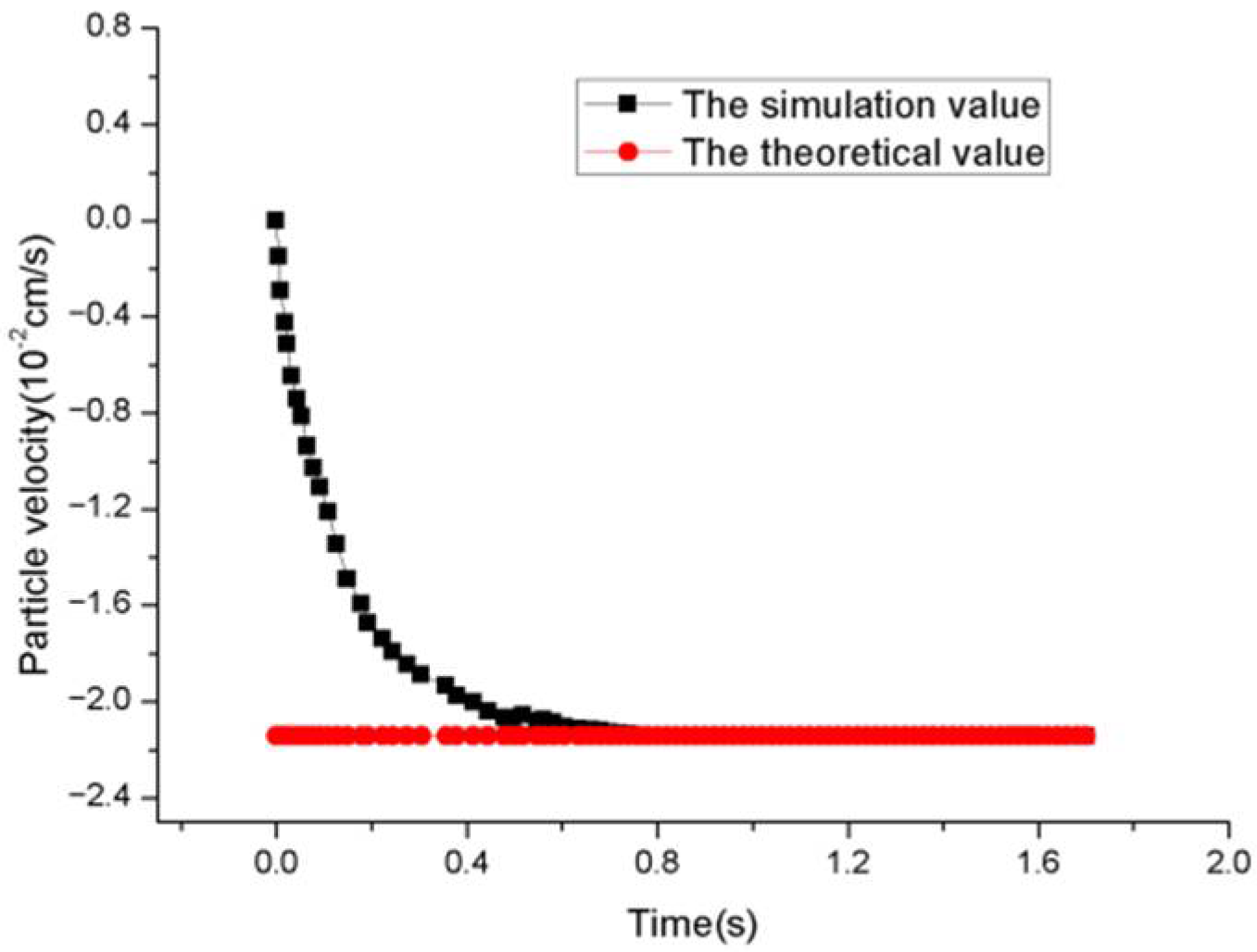
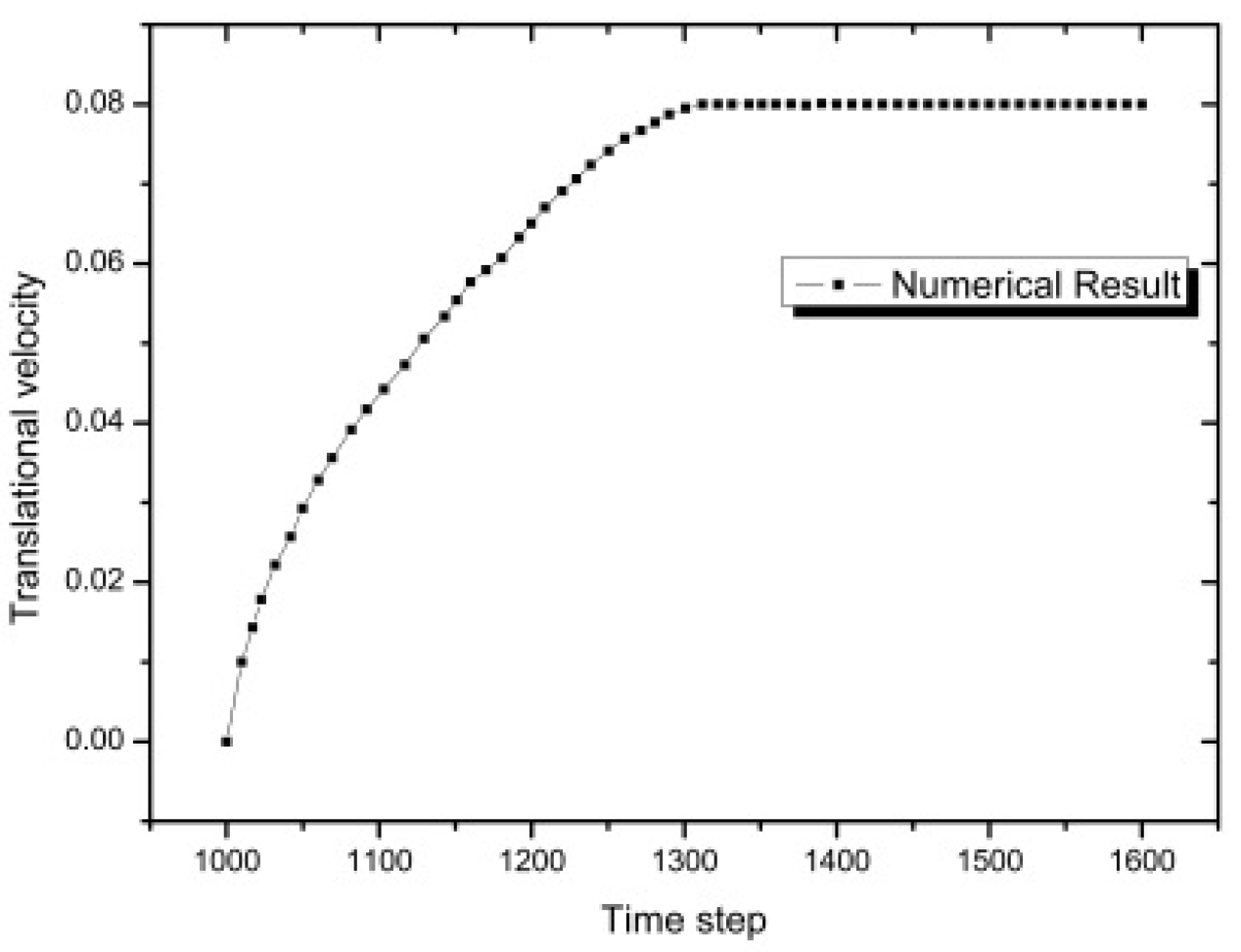

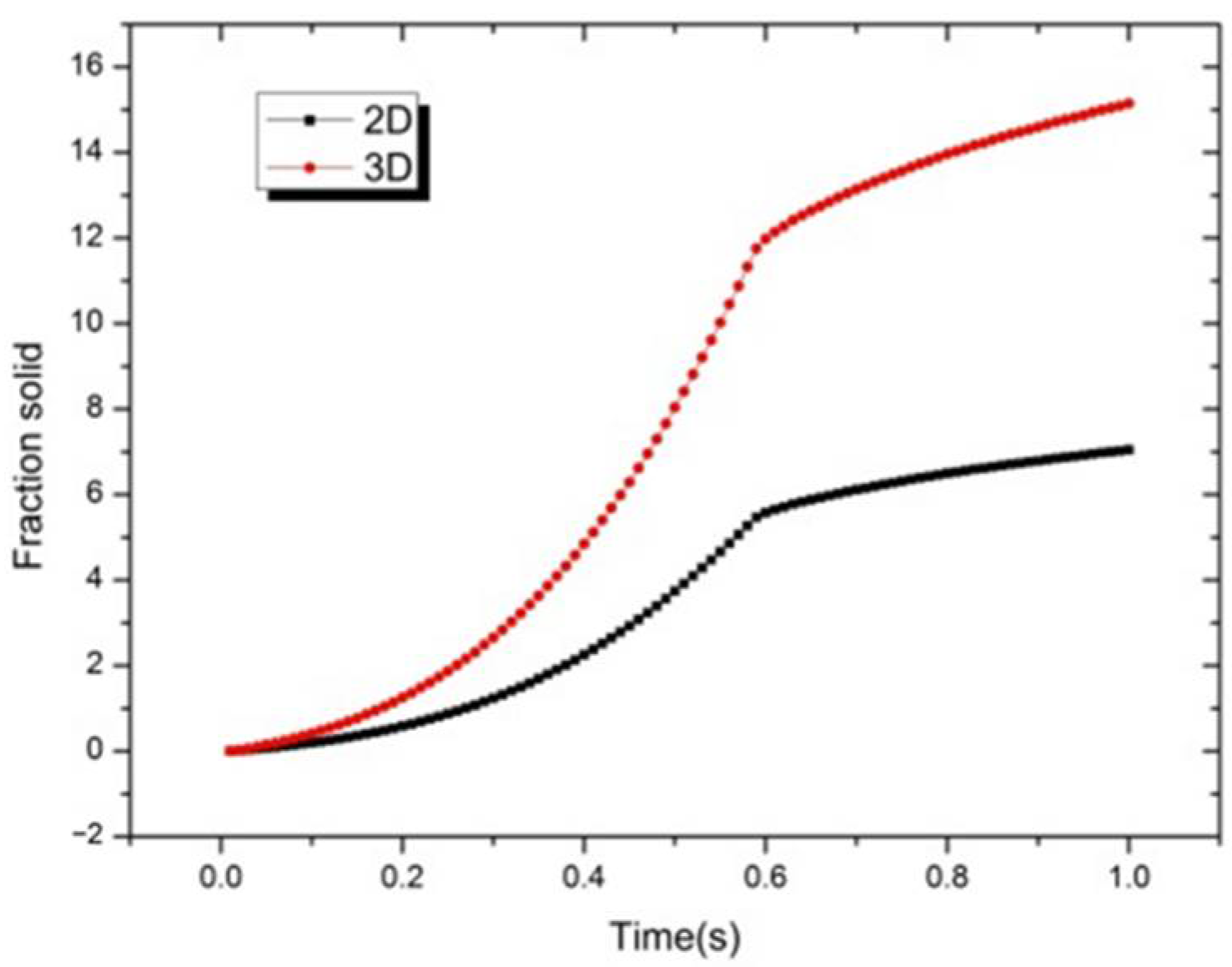
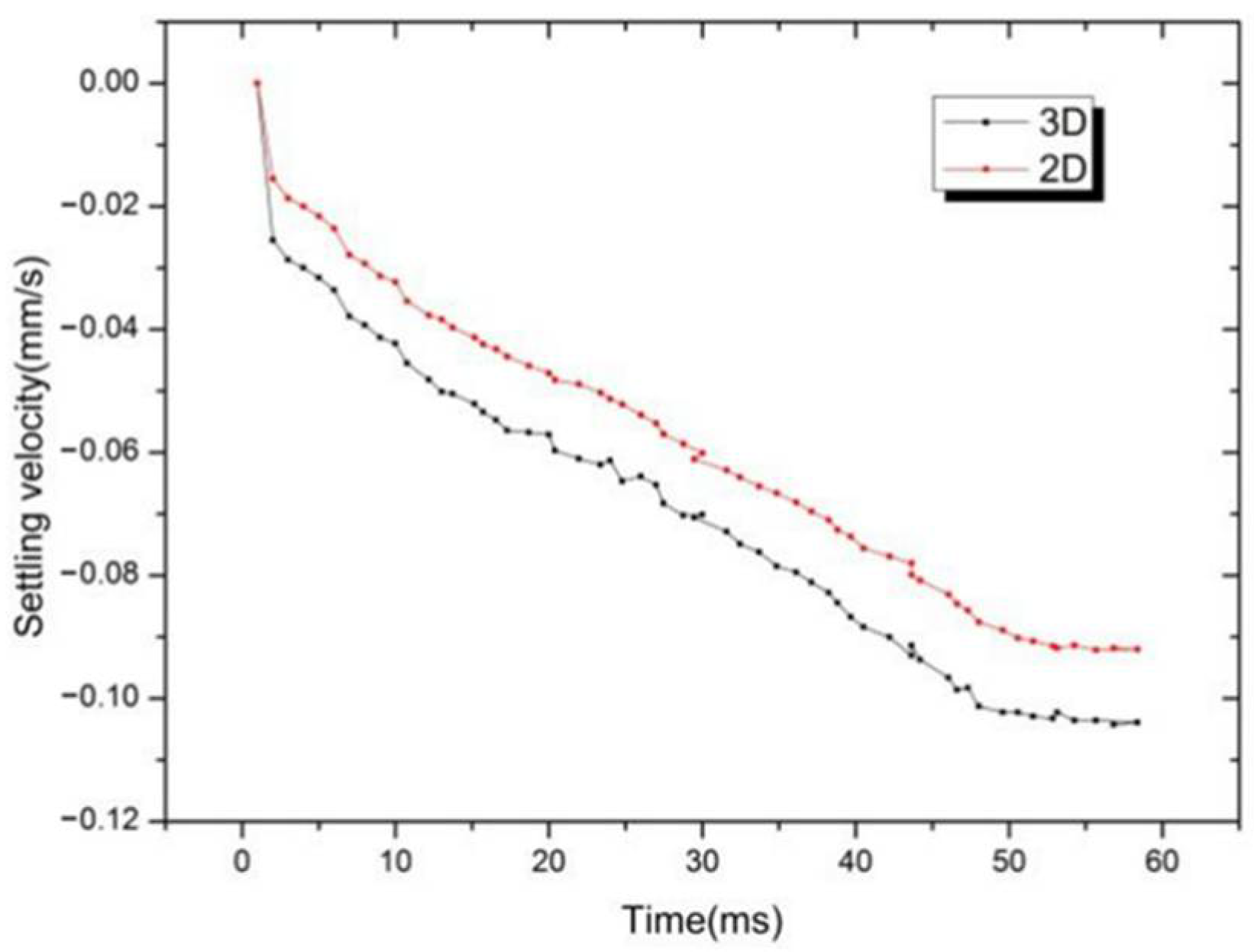
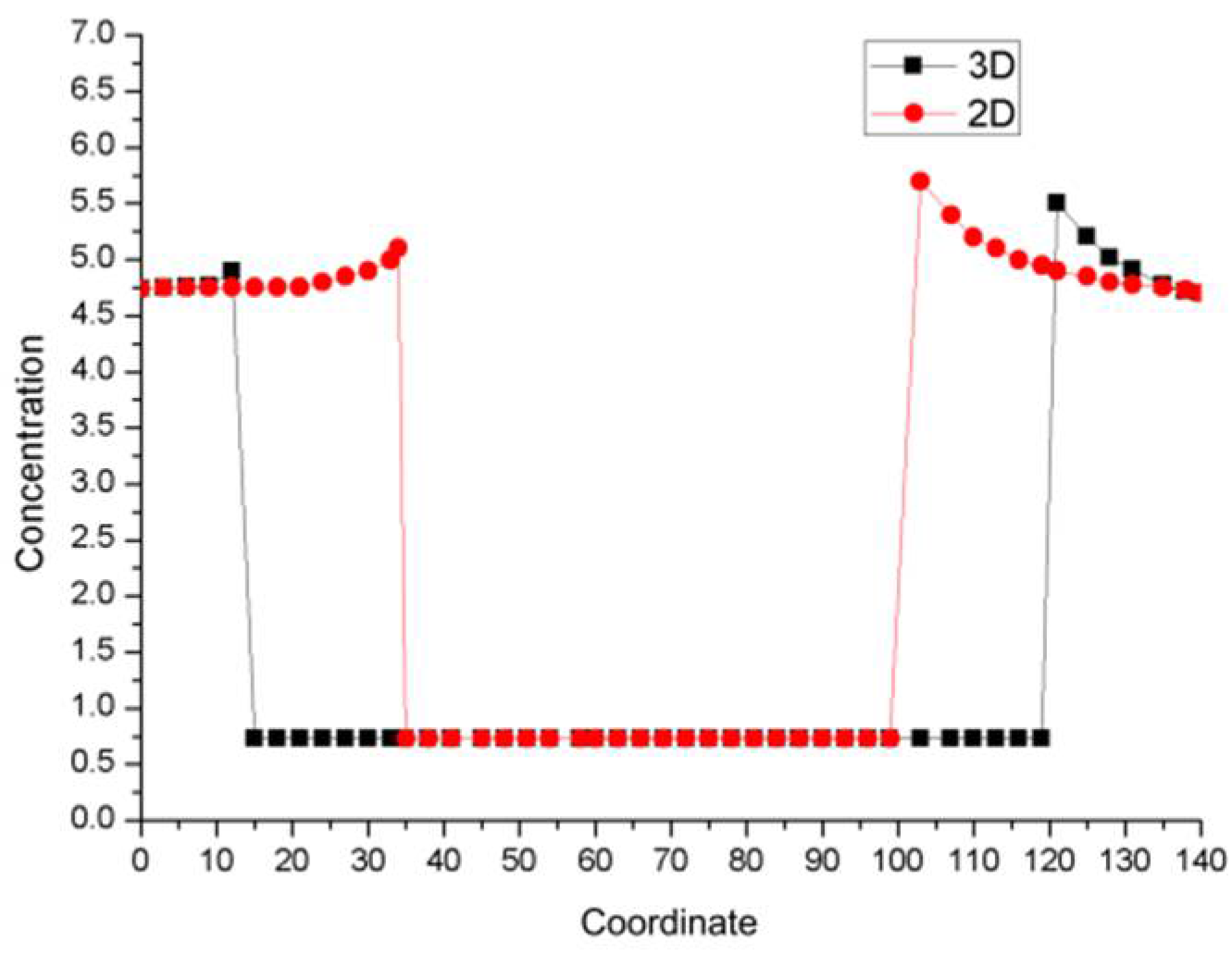


| Physical Parameter | Symbol | Value |
|---|---|---|
| Liquidus temperature | TL [K] | 917 |
| Solidus temperature | TS [K] | 821 |
| Liquidus slope | m [m·K/%] | −3.44 |
| Thermal diffusivity | α [m2·s−1] | 2.7 × 10−7 |
| Fluid viscosity | ν [m2·s−1] | 1.2 × 10−6 |
| Diffusivity in liquid | D [m2·s−1] | 3.0 × 10−9 |
| Partition coefficient | k | 0.145 |
| Liquid density | ρ [kg·m−3] | 2606 |
| Time(s) | No. 1 | No. 2 | No. 3 | No. 4 | No. 5 |
|---|---|---|---|---|---|
| 0.1 | +1 | 0 | +1 | +1 | −1 |
| 0.2 | +1 | 0 | 0 | −2 | +1 |
| 0.3 | +2 | +1 | +2 | 0 | 0 |
| 0.4 | 0 | +1 | +1 | +1 | +1 |
| Time(s) | No. 1 | No. 2 | No. 3 | No. 4 | No. 5 |
|---|---|---|---|---|---|
| 0.1 | +2 | −2 | +1 | −5 | 0 |
| 0.2 | +1 | −1 | +3 | −2 | 0 |
| 0.3 | 0 | −2 | +1 | 0 | 0 |
| 0.4 | +1 | 0 | +1 | −1 | +1 |
Publisher’s Note: MDPI stays neutral with regard to jurisdictional claims in published maps and institutional affiliations. |
© 2021 by the authors. Licensee MDPI, Basel, Switzerland. This article is an open access article distributed under the terms and conditions of the Creative Commons Attribution (CC BY) license (https://creativecommons.org/licenses/by/4.0/).
Share and Cite
Wang, Q.; Wang, Y.; Zhang, S.; Guo, B.; Li, C.; Li, R. Numerical Simulation of Three-Dimensional Dendrite Movement Based on the CA–LBM Method. Crystals 2021, 11, 1056. https://doi.org/10.3390/cryst11091056
Wang Q, Wang Y, Zhang S, Guo B, Li C, Li R. Numerical Simulation of Three-Dimensional Dendrite Movement Based on the CA–LBM Method. Crystals. 2021; 11(9):1056. https://doi.org/10.3390/cryst11091056
Chicago/Turabian StyleWang, Qi, Yingming Wang, Shijie Zhang, Binxu Guo, Chenyu Li, and Ri Li. 2021. "Numerical Simulation of Three-Dimensional Dendrite Movement Based on the CA–LBM Method" Crystals 11, no. 9: 1056. https://doi.org/10.3390/cryst11091056
APA StyleWang, Q., Wang, Y., Zhang, S., Guo, B., Li, C., & Li, R. (2021). Numerical Simulation of Three-Dimensional Dendrite Movement Based on the CA–LBM Method. Crystals, 11(9), 1056. https://doi.org/10.3390/cryst11091056






